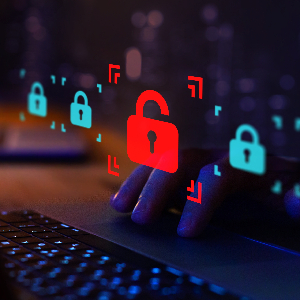
Infrastructure security is a leading concern for cybersecurity professionals today. Cybercriminals are targeting industrial systems with increasing frequency, and these attacks can have devastating consequences. Further complicating the issue is the fact that many communities rely on outdated technology, leaving them vulnerable to disruption.
Understanding the Security Challenges of Legacy Systems
Although many heavy industries are implementing new technologies, they often run these on top of old hardware and outdated software. Even though the newer Internet of Things (IoT) and artificial intelligence (AI) solutions may technically work, the underlying infrastructure cannot fully — or securely — support them. This disconnect can create significant security risks.
These patchwork IT environments have led to problems like the 13,000 canceled Southwest Airlines flights in December 2022 and several critical systems breaches. Legacy solutions may be incompatible with needed security software or create gaps that go unnoticed because they don’t exist when new technologies run on the infrastructure they’re supposed to.
The obvious answer is to upgrade legacy IT, but many communities and organizations cannot afford to, at least not all at once. Technical debt — the financial burden of aging IT systems stemming from reliance on short-term fixes — is a $1.52 trillion problem nationally.
Steps to Secure Communities with Outdated Infrastructure
While the risks of technical debt are imposing, it’s not an impossible obstacle. Critical infrastructure organizations and their communities can address it through five best practices.
Maximize Visibility
The first step in securing outdated IT environments is taking inventory of it all. Teams cannot protect what they don’t know about, and greater transparency will make it easier to prioritize fixes or catch potential breaches. Consequently, any cybersecurity upgrade strategy must start with a technology and data audit.
IoT sensors can provide some real-time insight into how data moves across a network, but it’s important to go further too. Automated asset discovery tools are a must-have here, as manual alternatives can take days if not weeks. Considering that 84% of data professionals say their workload is already above their capacity, such a lengthy process is not viable.
Invest in Infrastructure Upgrades
Once administrators gain full visibility over an environment, they can see which upgrades are most pressing. Taking a slow, thoughtful approach to investing in newer, safer infrastructure will help spread out the upfront costs while protecting the most vulnerable systems. The key is to prioritize whichever solutions whose outdatedness poses the greatest threat.
As IT teams plan these upgrades, they should consider outside sources of funding. Several state, federal and private programs offer grants for rural broadband improvements, which organizations may be able to use to make their networks less susceptible to disruption. Partnering with other parties to pull funds for larger upgrades that benefit everyone can help, too.
Emphasize Network Controls
Even with grants and a clear path toward modernization, infrastructure upgrades will take time. Admins can mitigate security risks in the meantime by focusing on protections that don’t rely on specific hardware. Network controls, like segmenting IoT systems from other endpoints or monitoring cross-device traffic, can provide some defense before asset-level security catches up.
Network-based security measures are more likely to achieve their full functionality regardless of the hardware they ultimately protect. Because these solutions generally watch for data movement and activity between devices, interoperability with the endpoint itself is less of an issue.
Train All Users
Non-technical security steps are likewise crucial when IT upgrades are unobtainable at the moment. More specifically, organizations should emphasize training their users in best cybersecurity practices. When 73% of all breaches involve the human element, addressing errors is often a better solution than technological controls, regardless of how old a system is.
Credential management and resisting social engineering attacks should make up much of this training. Employees should also understand any unique considerations from the old hardware they use and company-specific protocols to address such risks. Regular simulations and refresher courses are also preferable, as users can easily become complacent over time.
Spread Awareness
Finally, critical infrastructure organizations should raise awareness about the threat of technical debt. As more people learn how outdated systems impact their safety, support for larger upgrades will become increasingly accessible.
It’s particularly important to express these dangers to stakeholders who have power over funding and IT investments. Many may be unwilling to spend much on modernization because they don’t understand the gravity of the situation. Explaining this side will encourage action.
Legacy Systems Demand Attention
Legacy hardware and software are more prevalent issues than they initially seem. As cybercriminals keep targeting critical infrastructure, it will become increasingly crucial to address these risks. The road to modernization is long and expensive, but if organizations start today, they can ensure a safer tomorrow.
